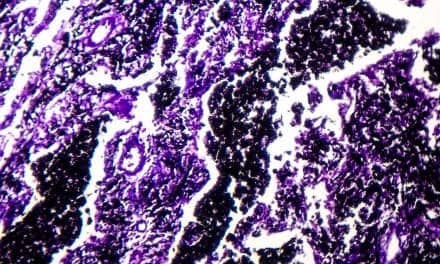A newly developed PET imaging agent, 64Cu-GPVI-Fc, can non-invasively identify pulmonary fibrosis in its early stages, reducing the need for unnecessary biopsies and allowing patients to begin treatment sooner, according to research published in The Journal of Nuclear Medicine.
While pulmonary fibrosis—a fatal disease with a life expectancy of three to five years after diagnosis—is relatively easy to diagnose in its advanced stages, it is difficult to identify pulmonary fibrosis in its earliest stages when treatment of the disease is most effective.
“Currently, routine clinical diagnosis of pulmonary fibrosis relies on breathing tests and visualizing the changes in lung structure with CT, but this anatomical information is often not sufficient to identify early signs of the disease,” says Nicolas Bézière, PhD, head of imaging of infection and inflammation at the Werner Siemens Imaging Center, department of preclinical imaging and radiopharmacy at Eberhard Karls University of Tübingen in Tübingen, Germany, in a release. “Molecular imaging of the biomarkers of pulmonary fibrosis could lead to earlier detection and better monitoring, as well as provide a novel way to assess treatment efficacy.”
In patients with pulmonary fibrosis, remodeling of lung tissue occurs through increased deposition of extracellular matrix fibers, such as collagen I-III, fibronectin, and fibrinogen. In the study, researchers used 64Cu-GPVI-Fc, an imaging agent that targets these extracellular matrix fibers, to identify pulmonary fibrosis in a mouse model. These results were compared to histological findings, as well as to imaging with 18F-FDG PET.
64Cu-GPVI-Fc showed significant uptake in lungs with pulmonary fibrosis, which matched histological results. Contrary to the findings of the 18F-FGD PET imaging, 64Cu-GPVI-Fc uptake was entirely linked to pulmonary fibrosis activity in the lung tissues and did not identify any inflammation.
“In a disease with such a large impact on the patients’ quality of life and with such a reduced life expectancy after diagnosis, it is critical that proper diagnosis and treatment follow-up methods are specific and sensitive enough that optimal medical care can be given. We believe 64Cu-GPVI-Fc takes us one step closer to personalized medicine for pulmonary fibrosis,” says Bézière in the release.
He continues, “We hope that this approach based on a tracer targeting a range of extracellular matrix fibers will provide a new way to view the ‘complete picture’ of pulmonary fibrosis progression and act as a new method to monitor treatment efficacy. Furthermore, fibrosis is not limited to the lungs, it can develop in other organs and lead to a loss of their function. Thus, we can foresee the transfer of this approach to other fibrotic diseases.”
Photo caption: Preclinical molecular imaging of pulmonary fibrosis progression. Left: experimental workflow and comparison of 18F-FDG and 64CU-GPVI-Fc lung accumulation during fibrosis progression in a mouse model of the disease. Top right: representative MRI and PET/MR images of 64Cu-GPVI-Fc distribution. Bottom right: histology reference.
Photo credit: Image created by S. Isser and N. Beziere, et al, Eberhard Karls University of Tübingen, Germany.










